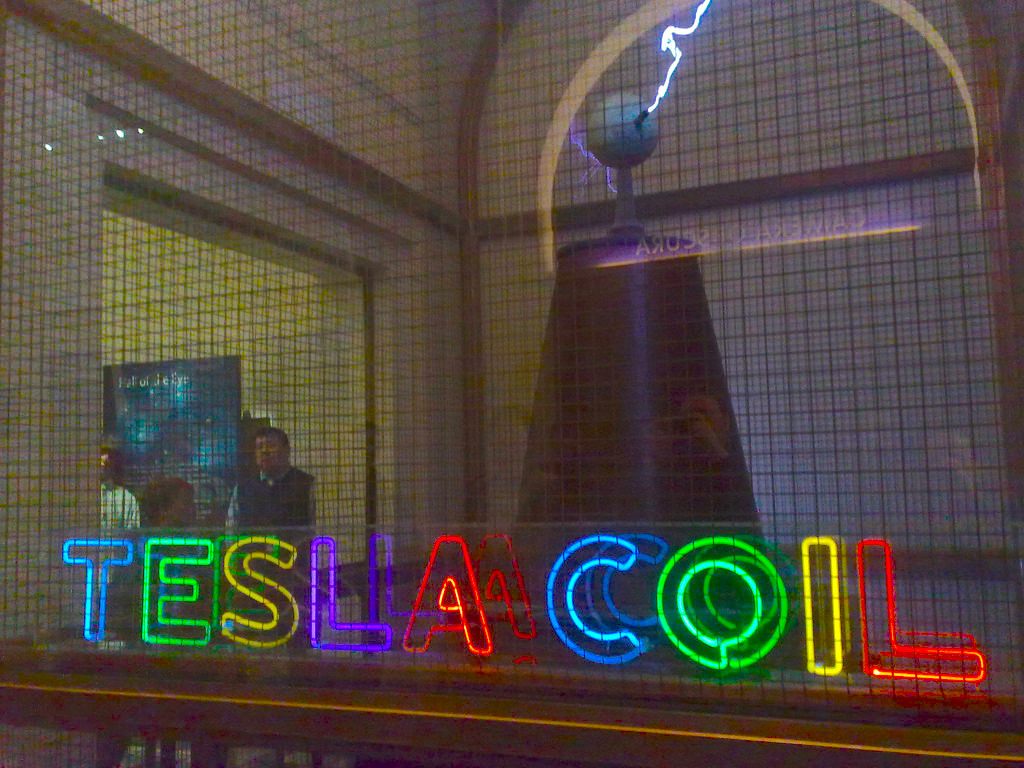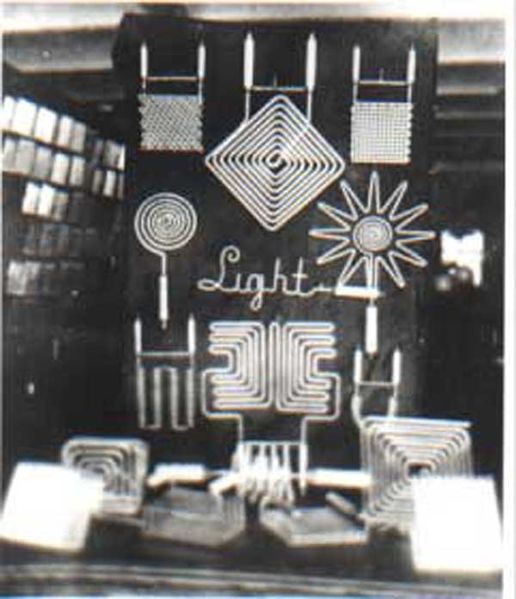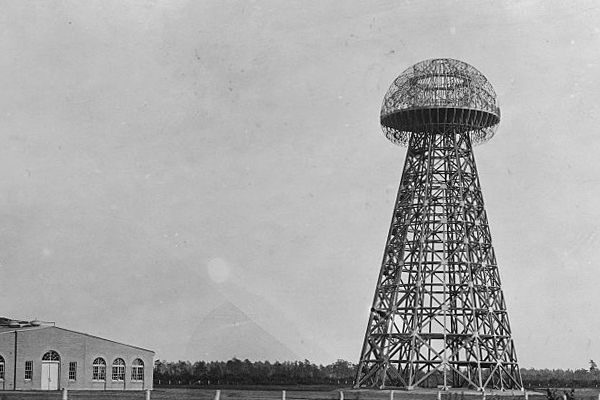Tesla Didn’t Invent the Neon Sign, He Imagined Something Even Better
For the inventor, it was all about the possibilities of wireless power.

There are all sorts of stories associated with the inventor Nikola Tesla, some truer than others. One of the more minor rumors about Tesla’s career, but one that remains surprisingly tenacious, is the story that he invented the neon sign. While this is not technically true, he did invent a wireless lighting concept that still hasn’t caught on.
The creation of the modern neon sign is credited to Georges Claude, who was one of the first people to devise a method of harnessing industrial amounts of neon, through his air liquefaction business in France. He famously displayed a pair of 38-foot-long neon tube lights at the Paris Motor Show in 1910, and the age of the neon sign was on its way.
But the true origins of what we consider a neon sign goes back a bit further. Developed in the 1850s by the scientist and glassblower Heinrich Geissler, the Geissler Tube was one of the first lights that operated by illuminating pressurized gasses in shaped, glass tubes (known officially as a “discharge tube”). Neon wasn’t discovered until 1898, but Geissler tubes produced similar effects to our modern neon signs by using rarified gases such as argon. Like the neon signs we see today, they were powered by electrodes on either end of the glass chamber that would run a current through the gas inside, causing it to light up.

Geissler tubes were mainly produced and displayed as curious decorations and scientific novelties, but they could be found in a number of laboratories, including Tesla’s. “This was actually the beginning of Tesla’s interest in wireless power,” says W. Bernard Carlson, author of Tesla: Inventor of the Electrical Age, and a professor in the School of Engineering at the University of Virginia. According to Carlson, Tesla had a selection of Geissler tubes in his lab, and one day when he was fiddling with one of his Tesla coils, the scientist noticed that his Geissler tubes began to light up in succession as he tuned the coils to different frequencies. They were reacting to the electromagnetic energy being transmitted by the coils.
One of Tesla’s major interests throughout his career was in developing a system of wireless energy, and these wireless lights became a terrific display of his concept. In fact, his end goal was to create artificial sunlight. The origins of his discharge lights are most often traced back to the World’s Columbian Exhibition, a world’s fair that took place in Chicago in 1893 (the Tesla coil was patented in 1891).
According to the book Tesla: Man Out of Time, among the inventions the titular scientist brought to the fair were a group of discharge lamps that lit up without the help of electrodes or wires. While the account does not go into greater detail about their shape or design, it does reference a later expert who states that they may have inspired the creation of the commercial fluorescent bulb, another invention for which Tesla has been erroneously credited.

The image most often associated with the story that Tesla invented neon signs does look pretty convincing at first blush. It features a collection of thin glass tubes shaped into swirls and designs, surrounding one that is shaped into the word “light.” While they look like what we would today consider neon signs, they were likely filled with a combination of gasses other than neon. “These things look like neon lights, they function like neon lights, in that they have a small amount of gas in them,” says Carlson. But the important distinction about Tesla’s proto-neon lights was that they were not directly connected to any power source. “His vision was that we’d have electric lighting with no wires. And that’s what this picture is about.”
The picture, above, is also most often cited as having been taken at the Columbian Exhibition, but Carlson thinks that it likely dates somewhat later, around 1899. “That [square-design] in particular is something he came up with when he was trying to convince John Jacob Astor into putting money into a wireless lighting system,” he says. “This whole display with the signs is later than the Chicago exhibition. He didn’t have anything near as complicated.”
So while Tesla didn’t actually invent the neon sign as we know it today, he was certainly working in similar science, and his early innovations, along with those of Geissler and others, undoubtedly contributed to the neon sign’s eventual boom. Today, neon signs are about as commonplace as your standard Edison-derived light bulb, but we have yet to master Tesla’s vision of the wireless light, although this has more to do with our inability to implement a system of wireless power than anything else.
Carlson notes that while we still don’t have freely available wireless lighting and power, Tesla’s inventions still resonate. “I always like to say, he’s negotiating with society. He’s saying, ‘Hey maybe the technology’s not totally done yet, but look what it could be!’”
Hear more about Tesla and neon on Obscura Day—May 6, 2017—at the Lite Brite Neon Studio in Brooklyn. Neon lighting experts will be on hand to discuss the famed inventor’s contributions to their craft, and attendees will see a demonstration of how neon lights are made today.







Follow us on Twitter to get the latest on the world's hidden wonders.
Like us on Facebook to get the latest on the world's hidden wonders.
Follow us on Twitter Like us on Facebook